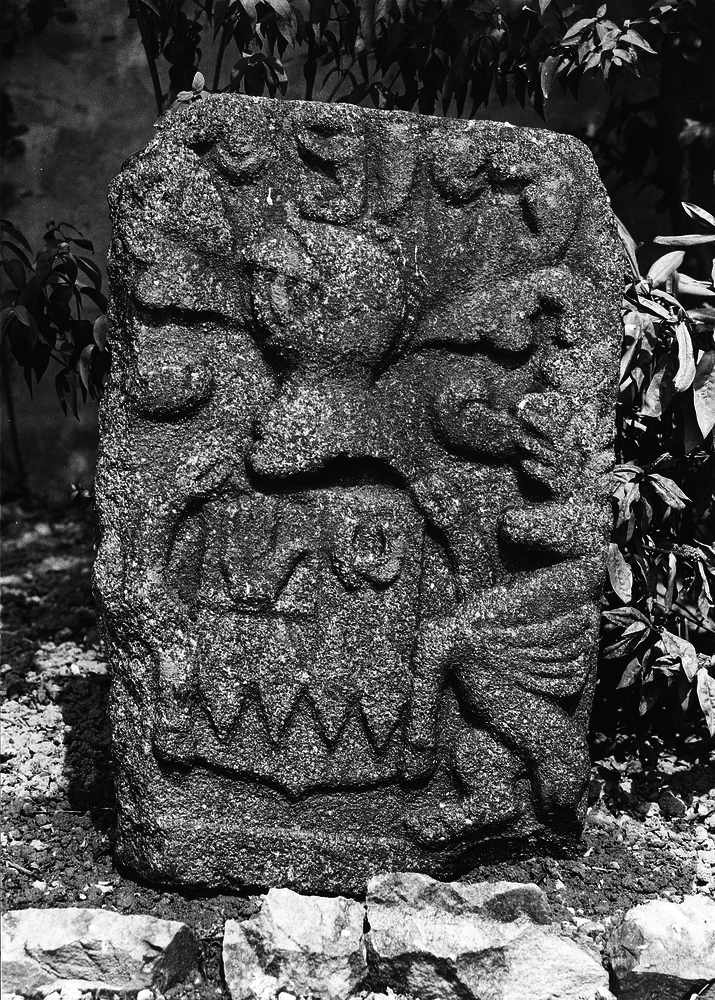It has been donated to the Société Jersiaise, which is now in the process of applying to the Planning Department to have it removed, as it has become part of an internal wall.

The Société, which promotes and protects Jersey’s culture, history and environment, plans to pair the carved slab of Chausey granite with another coat of arms, which belonged to former Bailiff Sir George Carteret and which is on display in the Jersey Museum.
The newly acquired piece is the coat of arms of Sir Henry Jermyn, who became Governor of Jersey in 1644, inheriting the title from his father, Sir Thomas Jermyn.
Neil Molyneux, the president of the Société Jersiaise, explained that the Royal Court building was rebuilt between 1647 and 1648 and that Sir George arranged to have the royal coat of arms, his family’s coat of arms and Lord Jermyn’s coat of arms carved and placed on the building.
The court building was demolished and rebuilt in the 1760s, and the three coats of arms were removed during the process.
Mr Molyneux said that the Royal coat of arms from the period is likely to have been destroyed during the parliamentarian occupation of the Island in the 1650s.
- Born in 1604, he was an English politician and courtier who sat in the House of Commons at different times between 1625 and 1643
- He and his family were staunch Royalists, and along with his brother Thomas, he served in different parts
- of England as an MP
- In 1644 he accompanied the wife of Charles I, Henrietta Maria, to Paris, where he served as her secretary
- Lord Jermyn is rumoured to have been secretly married to Henrietta after she was widowed, but no evidence has ever proved this claim
- Thanks to his many years in France, he bolstered Anglo-French relations following the Restoration
- He died in 1684, having developed many roads, including Jermyn Street and St Jamess Square
- Jermyn Street is known for its shirt-making shops and other retailers of well-to-do gentlemens apparel
- Such was the extent of his building that volume 9 of the Survey of London acknowledges Henry Jermyn as the Father of the West End
Sir George Carteret’s family’s symbol was kept for a time in a garden, and Lord Jermyn’s was built into an exterior wall of a St Helier home, which became an interior wall when the property was developed.
Mr Molyneux said that a previous tenant of the property had painted over the coat of arms in a ‘custard yellow’, but that the Société Jersiaise would eventually either clean it or repaint it in its original colours.
‘The Island got a mason from St Malo and brought over, presumably, three blocks of Chausey granite,’ Mr Molyneux said.
‘The mason spent about six months carving them and they were put up on 11 November 1648.
‘We know all this from Jean Chevalier’s journal.
‘He was a Vingtenier during the period of the English Civil War and he wrote a journal which was quite comprehensive, and which the Société now owns.
‘It’s the source of a huge amount of information from 1643 to 1651.
‘The mason was paid 20 shillings a day and out-of-pocket expenses, and it took him six months to complete the work.
‘The final cost was 25 pistoles, which was an old form of currency.’
Coats of arms were first used as a sort of badge of recognition so that fighting knights knew who was inside the head-to-toe body armour on the battlefield.
They evolved to symbolise families of high status.
‘Lord Jermyn’s coat of arms is from an interesting period in Jersey’s history, because the governor was in exile at the time in Paris with the court of Charles I’s wife, while he was in prison in England,’ Mr Molyneux added.






